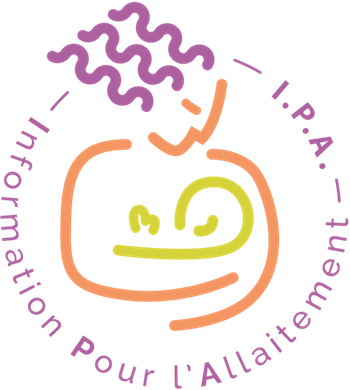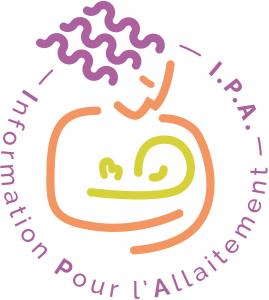Catégories
 > Pratique de l'allaitement > Accessoire et technique > Accessoire d'allaitement > Tire-lait > Pratique de l'allaitement > Accessoire et technique > Accessoire d'allaitement > Tire-lait
Tire-laitVoir aussi
|
Documents disponibles dans cette catégorie (81)
Bulletin : texte imprimé
Les Dossiers de l'Allaitement, n°155 - Février 2020
La Leche league France, Auteur | 2020SOMMAIRE Cas cliniques p.1 Troubles musculo-squelettiques à l’origine de problèmes d’allaitement douloureux p.1 Suspicion de sévère entérocolite induite par les protéines du lait de vache excrétées dans le lait maternel 2 Tissu mammaire a[...]Bulletin : texte imprimé
Les Dossiers de l'Allaitement, n°156 - Mars 2020
La Leche league France, Auteur | 2020SOMMAIRE : Cas cliniques 1 Lactation induite et allaitement partagé dans un couple de femmes 1 Gérer l’allaitement chez les femmes qui présentent un cancer du sein 2 Allergie aux protéines du lait de vache du produit d’enrichissement du la[...]Bulletin : texte imprimé
Les Dossiers de l'Allaitement, n°159 - Juin 2020
La Leche league France, Auteur | 2020SOMMAIRE : Cas cliniques Ablation d’implants mammaires chez une mère allaitante 1 Détection du virus de la fièvre jaune dans le lait maternel 2 Allaitement d’un bébé de petit poids de naissance par une mère ayant présenté un diabète gestat[...]Bulletin : texte imprimé
Hot Milk, n°11 - Printemps 2018
2018Bulletin : texte imprimé
Les Dossiers de l'Allaitement, n°147 - Juin 2019
La Leche league France, Auteur | 2019Article : texte imprimé
Pamela Berens, Auteur ; Eglash Anne, Auteur ; Michele Malloy, Auteur |There continue to be many controversies on management of persistent breast pain. • More scientific study is needed on assessment and management of almost all potential causes, including infection, neuropathic pain issues, breast pump te[...]texte imprimé
texte imprimé
Cécile Boscher, Auteur ; Sandrine Boudault, Auteur ; Julie Hamdan, Auteur | Paris [France] : ellipses | 2017"L’allaitement maternel est la forme d’alimentation la plus adaptée pour les nourrissons et les jeunes enfants. Pourtant, la durée de l’allaitement en France est particulièrement courte par rapport à celle de la plupart des pays développés et ne[...]document projeté ou vidéo
L'allaitement, un bonheur partagé. Tirer le lait. A l'aube de l'allaitement.texte imprimé
Comité pour la promotion de l'allaitement maternel, Auteur | Montréal [Canada] : Hôpital Sainte-Justine | Parents | 1999Le lait maternel est le meilleur aliment pour le bébé. Il permet, de plus, d?établir une relation privilégiée avec lui. Ce livre a pour objectif de répondre à toutes les questions que se posent les mères. Il fournit aussi de très nombreuses indi[...]texte imprimé
"Pourquoi choisir d’allaiter ? Comment cela fonctionne ? Quelles sont les bonnes positions ? Comment prévenir les difficultés ? Comment savoir que le bébé tète efficacement ? Quand et comment sevrer le bébé ? Comment gérer la reprise du travail [...]texte imprimé
"Ce précis de pratique clinique a été conçu pour assurer le soutien des professionnels qui accompagnent les familles souhaitant allaiter leur enfant. Le groupe d'auteurs (pédiatre, gynécologue, nutritionniste, pharmacien, puéricultrices, sages-f[...]texte imprimé
"Allaiter ou donner le biberon ? Toute femme enceinte est confrontée à ce choix. Évident pour certaines, il est compliqué pour d’autres d’autant que les idées reçues sont légion : lait maternel pas assez nourrissant, pratique douloureuse, sevrag[...]Article : texte imprimé
Beatriz Flores-Antón, Auteur ; Nadia Raquel García-Lara, Auteur ; Carmen Rosa Pallás-Alonso, Auteur |Inducing lactation in the absence of pregnancy (nonpuerperal lactation) is not always successful and, in many cases, only partial breastfeeding is achieved. Different protocols have been described, but scientific evidence and research are lackin[...]Article : texte imprimé
Background Numerous researchers have evaluated the influence of federal and workplace lactation policies on breastfeeding duration, however few have considered the experiences of breastfeeding people returning to school. Research aim The ai[...]document projeté ou vidéo
Le lait maternel à la fois nourriture et médicament, les avantages de l'allaitement pour la mère et le bébé, comment faire pour allaiter, avec quelle fréquence, et combien de temps.Article : texte imprimé
Roser Porta, Auteur ; Natàlia Miralles, Auteur ; Anna Paltrinieri, Auteur |The amount of milk production in mothers of babies admitted to the neonatal intensive care unit (NICU) is mostly determined by some actions focused on the first hours and days after birth. Working for an improvement in our previous results in te[...]Article : texte imprimé
Robyn M. Powell, Auteur ; Monika Mitra, Auteur ; Suzanne C. Smeltzer, Auteur |Background: The benefits of breastfeeding are well established, and breastfeeding is now widely practiced in the United States. Although increasing numbers of women with physical disabilities are having children, little information is available[...]Article : texte imprimé
Background: Human milk is understood to be the optimal nutrition for infants, yet many women struggle to nurse. Although exclusively pumping human milk can provide a solution, women may be unaware of this possibility and, thus, experience unnec[...]Article : texte imprimé
Julia P. Felice, Auteur ; Kathleen M. Rasmussen, Auteur |The convergence of work-related constraints and technological advances in commercially available breast pumps has catalyzed a major shift.1 Most human milk-feeding mothers in the United States now use breast pumps and bottles to provide human mi[...]Article : texte imprimé
Charlotte Grinberg, Auteur ; Rebecca Scott, Auteur ; Armond Goldman, Auteur ; Gilbert J. Grant, Auteur |Article : texte imprimé
Richard Osbaldiston, Auteur ; Leigh A. Mingle, Auteur |"The primary objective of this research was to create a detailed characterization of human milk donors, including descriptive information about demographics and lifestyle, involvement with the milk bank, reasons for donating, problems encountere[...]Article : texte imprimé
Article : texte imprimé
Vladimir I. Ilyin, Auteur ; Nikolay P. Alekseev, Auteur ; Mike M. Troschkin, Auteur |Background: Breastfeeding is the best source of food for the newborn. In a situation wherein it is not possible to breastfeed a baby, it may be necessary to express milk from the mother's breast using a breast pump. To achieve lactation success [...]Article : texte imprimé
Pamela D Hill, Auteur ; Jean C. Aldag, Auteur ; Michael Zinaman, Auteur |"This article reports the naturally occurring pattern of milk output beginning day 6 through day 42 postpartum from each individual breast in 95 pump-dependent mothers of a non-nursing preterm infant. Of the 3488 study days, milk output was grea[...]Article : texte imprimé
Elizabeth G. Ames, Auteur ; Heather L. Burrows, Auteur |Background: Returning to work and lack of support for expressing breast milk (pumping) at work is often cited as a reason that mothers discontinue breastfeeding, particularly among female physicians. It is unclear how these perceived difficultie[...]Article : texte imprimé
Barbara Haase, Auteur ; Sarah N. Taylor, Auteur ; Jill Mauldin, Auteur |Mothers of hospitalized premature infants who choose to provide breast milk are at increased risk of an inadequate breast milk supply. When nonpharmacologic interventions to increase milk supply fail, clinicians are faced with limited options. T[...]Article : texte imprimé
Yiska Loewenberg Weisband, Auteur ; Sarah A. Keim, Auteur ; Lisa M. Keder, Auteur |Introduction: Milk expression has become common, but little is known about women's intentions and motivations for pumping. Our objectives were to measure, among newly postpartum women, intentions related to breast milk feeding and pumping, reaso[...]Article : texte imprimé
Juila H. Kim, Auteur ; Jong C. Shin, Auteur ; Sharon M. Donovan, Auteur |"Background Returning to work is one of the main barriers to breastfeeding duration among working mothers in the United States. However, the impact of workplace lactation programs is unclear. Research Aim The aim of this study was to evalua[...]Article : texte imprimé
Article : texte imprimé
Lauren M Dinour, Auteur ; Jacalyn M. Szaro, Auteur |Background: Many mothers experience barriers to maintaining a breastfeeding relationship with their infants upon returning to work and, consequently, terminate breastfeeding earlier than recommended or intended. As such, employers are in a uniqu[...]Article : texte imprimé
Popular knowledge is that the United States has a major problem in supporting mothers who wish to continue with exclusive breastfeeding at least for 3 months, let alone for the recommended 6 months. The absence of paid maternity leave, except fo[...]Article : texte imprimé
Patrick Martinat, Auteur |Dans Le MondeA Bourges, une exposition renouvelle le regard sur l'enfance et la maternité dans l'Antiquité . Les archéologues avaient pris l'habitude de cataloguer comme « biberon », faute de mieux, un petit pichet modeste du col, au bec atrophié, à la panse[...]Article : texte imprimé
texte imprimé
Mêlant l'expérience de parents à travers leurs témoignages à la connaissance de professionnels de la santé, Anna Rousseaux - De Leo, mère de 4 filles dont des jumelles, a souhaité partager son expérience et le bonheur d'allaiter avec d'autres mè[...]Article : texte imprimé
Rebecca Hoban, Auteur ; Aloka L. Patel, Auteur ; Clarisa Medina Poeliniz, Auteur |Objective: Mothers of premature infants confront barriers to coming to volume (CTV; ≥500 mL/day mother's own milk [MOM] by postpartum day 14), a strong predictor of continued MOM provision at neonatal intensive care unit (NICU) disch[...]texte imprimé
Nadine Sargiacomo, Auteur | 2004Analyse du questionnaire. Quels choix pour les mères ? les solutions légales existantes, les conseils pour maintenir la lactation, propositions pour faciliter le retour au travail des femmes allaitantes.Article : texte imprimé
Sarah A. Keim, Auteur ; Katie Smith, Auteur ; Taniqua Ingol, Auteur |Background: Increasing the proportion of infants who are breastfed and extending breastfeeding duration are high-priority U.S. goals. Evaluation of progress is based on federal survey data, but federal survey questions do not reflect contemporar[...]Article : texte imprimé
Reena Oza-Franck, Auteur ; Erica P. Gunderson, Auteur |Background: In-hospital experiences among women with gestational diabetes mellitus (GDM) could impact breastfeeding success. We sought (1) to determine changes in the prevalence of hospital breastfeeding experiences between 2004–2008 and 2009–20[...]Article : texte imprimé
Kelly A. Castro-Blanco, Auteur ; Rachel M. Marks, Auteur ; Sheela R. Geraghty., Auteur ; Julia P. Felice, Auteur ; Kathleen M. Rasmussen, Auteur |Background: In light of the widespread use of breast milk pumping, or, “pumping,” mothers are seeking clear, adequate breast pumping guidelines. We aimed at characterizing the information in web pages that mothers might find online when searchin[...]Article : texte imprimé
Article : texte imprimé
Brittany Anne Jackson, Auteur ; Carrie M. Pawlowski, Auteur ; Gary M. Weiner, Auteur ; Julie Sturza, Auteur ; Kate Peterson Stanley, Auteur |Background: Postpartum mothers express and store breast milk using a hospital-grade pump and manufacturer-specific kit (flanges, bottles, tubing, valves, and membranes). After hospital discharge, mothers may attempt to interchange kits from diff[...]Article : texte imprimé
Dare Henry-Moss, Auteur ; Stephanie Abbuhl, Auteur ; Lisa Bellini, Auteur |Background: Comprehensive workplace lactation support programs can reduce the risk for early breastfeeding discontinuation; however, scant evidence is available to inform user-centered design of employee lactation spaces. This study describes he[...]Article : texte imprimé
Maria Obaid, Auteur ; Teryn Igawa, Auteur ; Abigael Maxwell, Auteur |Background: In 2015, we implemented a comprehensive lactation bundle named Liquid Gold. Lactation bundles in the neonatal intensive care unit have not been well studied. Materials and Methods: This is an ongoing quality improvement breastfeed[...]Article : texte imprimé
Margaret A. D'Andrea, Auteur ; Diane L. Spatz, Auteur |Introduction: Childbearing women with primary or secondary Herpes Simplex Virus type 1 infection are at risk of transmitting neonatal herpes infection to their infants; a medical emergency that is associated with high mortality and morbidity. N[...]texte imprimé
"Worried about making enough milk for your baby? Get the help you need with this practical guide from two lactation experts. Since publication of this “low milk supply bible” a decade ago, new insights and better ways to maximize milk productio[...]Article : texte imprimé
Youlin Qi, Auteur ; Yuanting Zhang, Auteur ; Sara Fein, Auteur |Background: Benefits of using a breast pump are well documented, but pump-related problems and injuries and the associated risk factors have not been reported. Objectives: This study aimed to describe breast pump-related problems and injuri[...]texte imprimé
Nicole Doré, Auteur ; Danielle Le Hénaf, Auteur | INSPQ - Institut national de santé publique | 2017Un guide pratique destiné aux mères et pères qui offre une information appuyée scientifiquement sur la grossesse, l’accouchement et les deux premières années de vie de l’enfant.[Présentation par IPA]Article : texte imprimé
Defne Engür, Auteur ; Bilin Çetinkaya Çakmak, Auteur ; Münevver Kaynak Türkmen, Auteur |Acinetobacter baumannii is a Gram-negative coccobacillus that has emerged as a troublesome pathogen causing institutional outbreaks. Environmental contamination is a distinctive characteristic of this microorganism, which brings a further diffic[...]Article : texte imprimé
Narendra R. Dereddy, Auteur ; Ajay J. Talati, Auteur ; Ashley Smith, Auteur |Breast milk feeding has advantages over formula feeding in premature infants, but its use in them is low. We initiated measures in our inner-city hospital such as starting a dedicated lactation service, counseling the mothers prenatally and post[...]document projeté ou vidéo
texte imprimé
La Leche league France, Auteur ; Brigitte Sparnaaij, Illustrateur | L'Etang la Ville : Leche League France | 2019"Comment reconnaître qu'un bébé prend bien le sein ? A quelle fréquence doit-il téter ? Pendant combien de temps le lait tiré peut-il être conservé ? Ce petit mémo apporte de multiples réponses aux questions fréquentes autour de l'allaitement."[[...]texte imprimé
Article : texte imprimé
Article : texte imprimé
Paula P Meier, Auteur |Feedings with mothers' own milk improve short- and long-term outcomes in very low birth weight infants, including dose-dependent reductions in the risk, incidence, and severity of necrotizing enterocolitis (NEC), late-onset sepsis, bronchopulmon[...]Article : texte imprimé
Sarah A. Keim, Auteur ; Kelly M Boone, Auteur ; Reena Oza-Franck, Auteur |Background: More than 85% of contemporary lactating women in the United States express their milk at least sometimes. Some produce milk exclusively through pumping. We characterized women who pumped but never fed at the breast and compared their[...]Article : texte imprimé
Rui Li, Auteur ; Taniqua Ingol, Auteur ; Sarah A. Keim, Auteur ; Katie Smith, Auteur ; Reena Oza-Franck, Auteur |Background: The reliability of long-term maternal recall of breastfeeding has been assessed previously, but not maternal milk expression (pumping) and child consumption of expressed milk. Objective: To examine the reliability of maternal reca[...]document cartographique manuscrit
Dépliant général qui répond aux questions les plus fréquentes des mères. Existe aussi en arabe et en russe.Article : texte imprimé
P Benkimoun, Auteur |Dans Le MondeRevoir la position du bébé lors de la tétée et quelques vieilles recettes peuvent aussi soulager le sein.document projeté ou vidéo
document projeté ou vidéo
Article : texte imprimé
Hope K. Lima, Auteur ; Kenneth Vogel, Auteur |Background During pumping, storage, and pasteurization human milk is exposed to light, which could affect the concentrations of light-sensitive vitamins. Currently, milk banks do not regulate light exposure. Research Aim The aim of this pap[...]enregistrement sonore non musical
texte imprimé
"The Breastfeeding Atlas, 6th edition, has been substantially re-written to reflect the most current research and best, evidence-based clinical practices. It also reflects the practical experience of Barbara Wilson-Clay, and Kay Hoover, both Fel[...]texte imprimé
Concerned about making enough milk for your baby? Wondering how to make more? Two lactation experts are here to help. Separate fact from fiction with help from this comprehensive book about improving low milk supply. Written by two leading expe[...]Article : texte imprimé
Susanne Madden, Auteur ; Beverly Curtis, Auteur |With the implementation of the Health Resources and Services Administration Women's Preventive Services Guidelines, which went into effective August 1, 2012, under the Affordable Care Act, healthcare insurance companies across the country have i[...]Article : texte imprimé
Elise Bream, Auteur ; Hong Li, Auteur ; Lydia Furman, Auteur |Background: Breastfeeding is the optimal form of infant nutrition, yet national rates are below recommendations with persistent disparities. Breast pumps may address the reasons that mothers discontinue breastfeeding. Objectives: To determine[...]Article : texte imprimé
Nikolay P. Alekseev, Auteur ; Vladimir I. Ilyin, Auteur |Background: The use of breast pumps with a compression component has shown their higher efficacy compared with vacuum pumps. However, the direct role of the compression stimulus is not sufficiently proven in the removal of milk from the main mil[...]Article : texte imprimé
Virginia Thorley, Auteur |The practice of feeding expressed breastmilk by bottle, in place of the breast, has become common in affluent countries and is perceived as a mainstream mode of infant feeding (Mclnnes, Arbuckle, and Hoddinott, 2015; Ryan, Team, and Alexander, 2[...]texte imprimé
The Virtual Breastfeeding Culture: Seeking Mother-to-Mother Support in the Digital Age illustrates that since the advent of the digital communication, mothers have been using the Internet to support and connect with each other. Women have claime[...]Article : texte imprimé
Article : texte imprimé
document projeté ou vidéo
Catherine Minot, Auteur ; Philippe Minot, Monteur | Dury : MédialactéeDevoir tirer son lait, que de questions, voire de craintes. Pourtant, tirer le lait ne devrait pas apparaître comme un problème, mais comme une étape de la vie d'une jeune maman. Connaître les mécanismes de la lactation, les matériels et les dif[...]texte imprimé
Le Traité de l?allaitement maternel offre une information complète et à jour pour les personnes ressources en allaitement.Article : texte imprimé
Yeon K. Bai, Auteur ; Lauren M Dinour, Auteur |Background: A proper assessment of multidimensional needs for breastfeeding mothers in various settings is crucial to facilitate and support breastfeeding and its exclusivity. The theory of planned behavior (TPB) has been used frequently to mea[...]Article : texte imprimé
Rei Yamada, Auteur ; Kathleen M. Rasmussen, Auteur ; Julia P. Felice, Auteur |Background: Mothers commonly cite an inadequate milk “supply” as a reason for stopping human milk feeding. Further, pumping may affect mothers' understanding of their milk production. We aimed to characterize the questions mothers ask each other[...]Article : texte imprimé
Tyra T. Gross, Auteur ; Rachel Powell, Auteur ; Alex K. Anderson, Auteur |Background: African American women have the lowest breastfeeding rates among all racial/ethnic groups in the United States. Peer counseling is an effective intervention in improving breastfeeding in this population. However, little is known on [...]Article : texte imprimé

























































